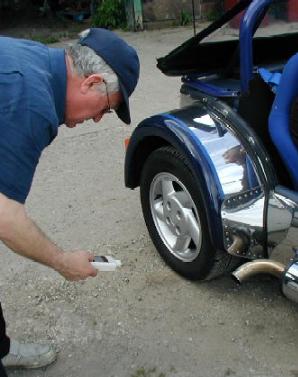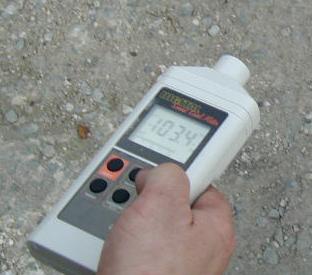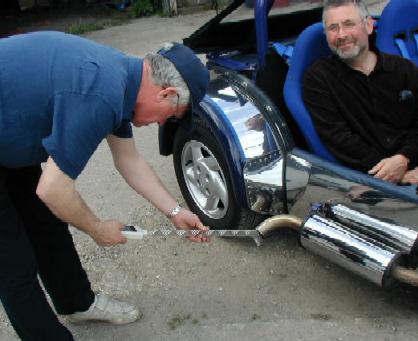Noise Testing
Unlike sharp edges, field of vision etc. noise testing is not something that the amateur car mechanic can readily check, as he doesn't have the necessary equipment, and it can be somewhat upsetting when you fail the IVA test and have to pay a retest fee, because you're a few decibels over the limit, even more so if you lose your track day after you've paid out over £100 for the privilege.
Before Tim Stott got involved with Kitcars, he was the senior Noise Inspector for the North West area of the ACU (Auto-cycle Union) responsible for noise testing at motorcycle events throughout the Lancashire area, so here he pass on what little knowledge he can still remember.
How to noise test
Get hold of a noise meter. Smart phones often have an app that can measure dbs, but obviously you don't know the accuracy. But at least they will give you an indication of your level.
Find a large open area, minimum of 80 metres around the car must be free from other obsticles, cars, walls, hedges etc. Better to be on Tarmac, as testing on grass will reduce the reading.
Do not attempt to noise test in wet weather.
Try to position the car so that any breeze is blowing the exhaust gases away from the noise meter.
Two people are needed, one to use the cars accelerator, one to take the actual readings.
Make sure that the car has been warmed up to normal running temp, but you don't want the fan running when testing. Also if the exhaust is popping and banging, forget it! it's a waste of time testing it, get it sorted first.
|
Using the patient measuring aid, hold the microphone of the meter, ½ metre away, at 45º from the silencer exit., and at lease 200mm above the ground.
The meter needs to be switched on, on the 'A' weighted scale, on 'Auto' and 'slow' response setting.
|
|
|
Remember to move the 'measuring aid' away, whilst you take the reading.
Build up the engine revs to the required rpm, and hold it there, get it to settle,(This can be very difficult, as it's usually 'coming onto cam' then take the reading. If you have 2 silencers, then both must be tested.
Most racing circuits test at 4500rpm
|

|
| OK, you've now got a reading, but that's not the end of it. Noise is actually sound pressure waves in the air, so any variation in the 'normal' air pressure, will give slightly different results. for example, a system reading 100dba one day, could read 101dba, or 99dba (or a larger deviation) the next day.
OOPS! 103dba, too much for SVA, OK for most circuits
|

|
The other thing to remember, these meters, and 99% of all hand held meters are only accurate to +/- 2dba (in practice they are well within those tolerances) but this means that one meter could read 98dba, yet another one could read 102dba, both are still in tolerance. So you always allow 2dba for the meter tolerance.
the Noise Meters used by the SVA inspector, are supposed to be acurate to +/- 1dba, so with a pass mark of 101dba, that is actually a requirement of 100dba, but allowing 1dba for meter tolerance (don't forget, it could even be reading under!)
Link to The actual SVA manual requirements on noise.


